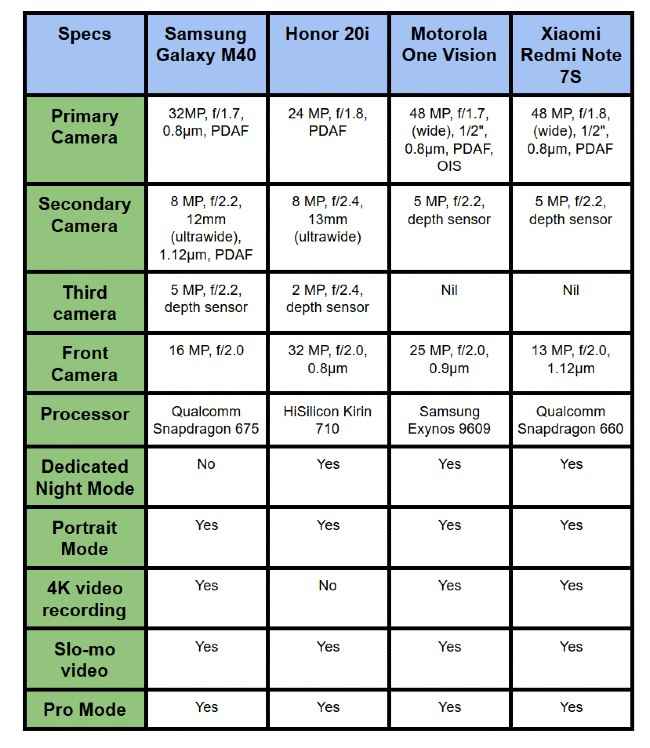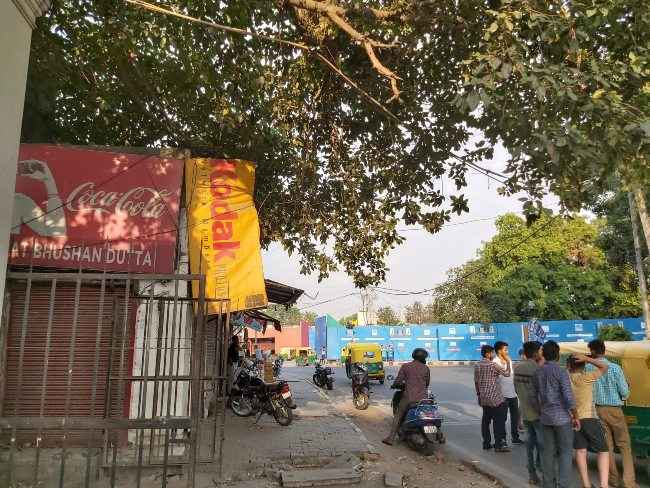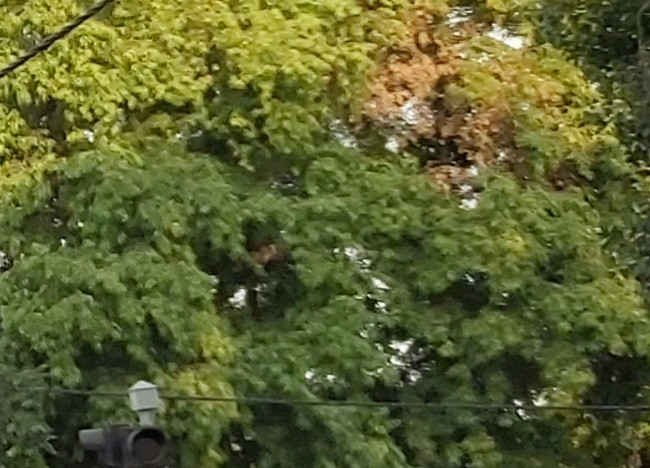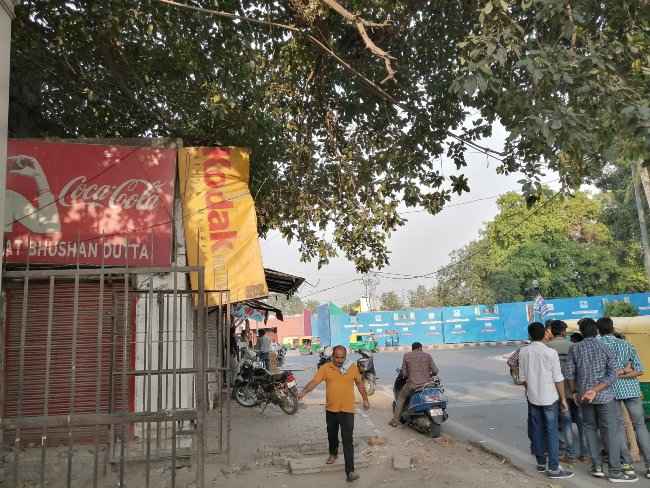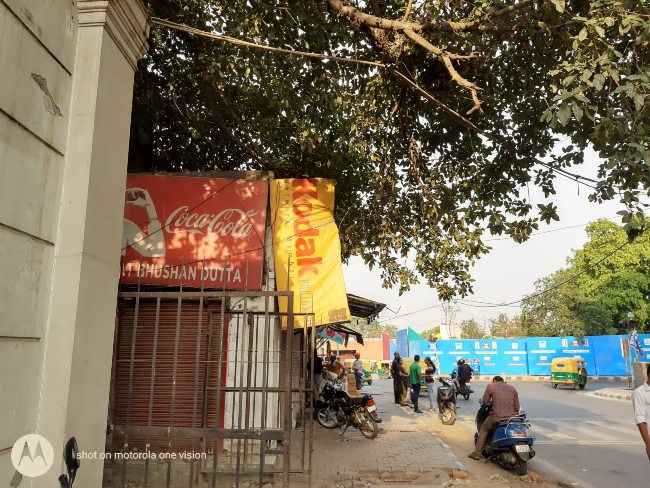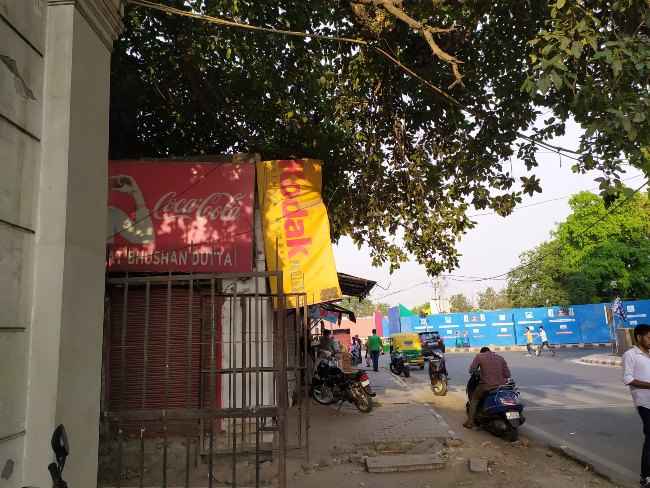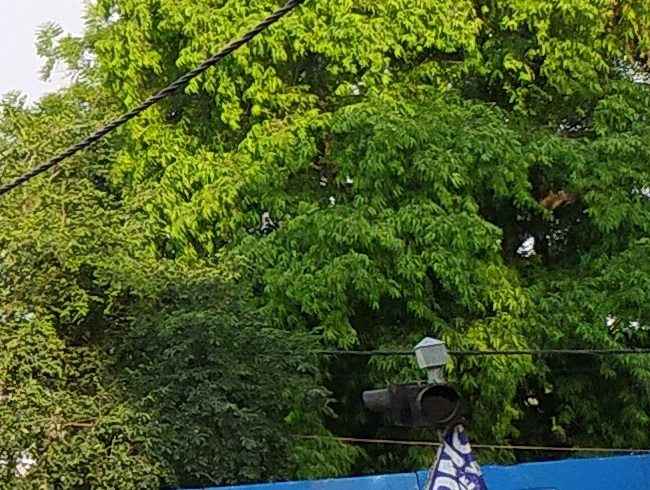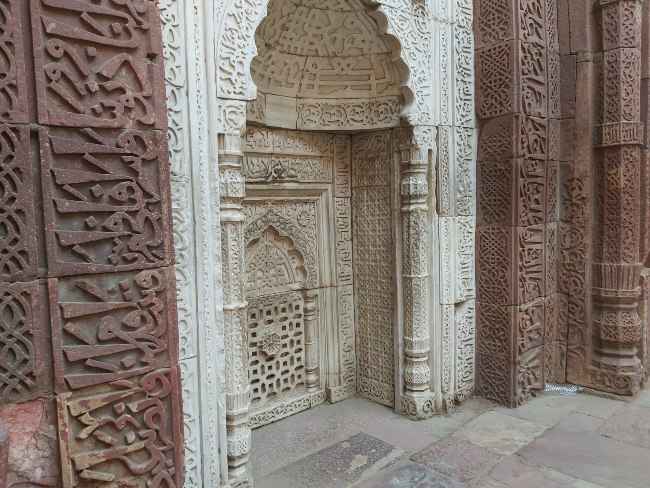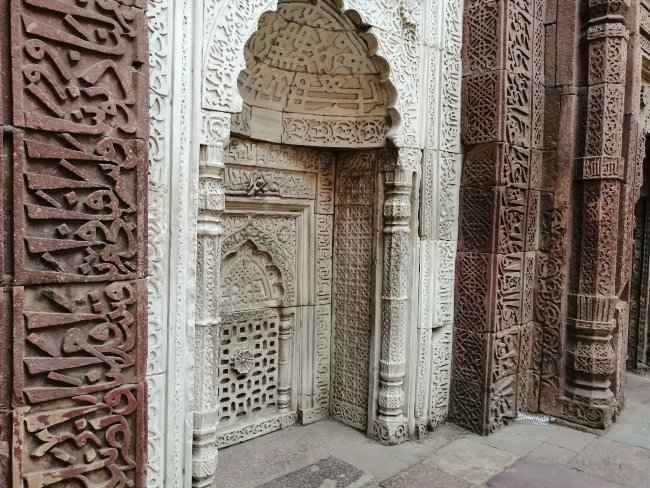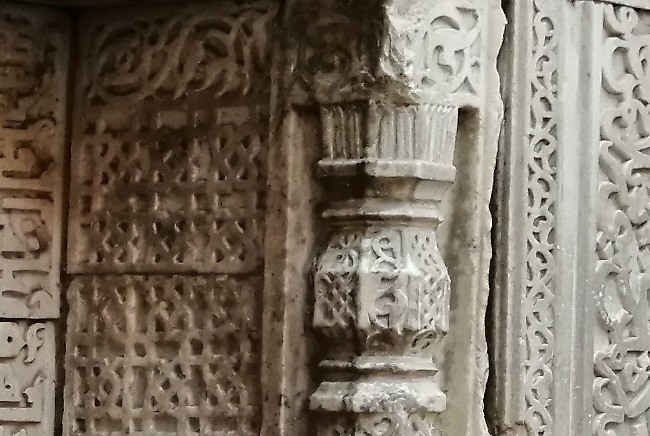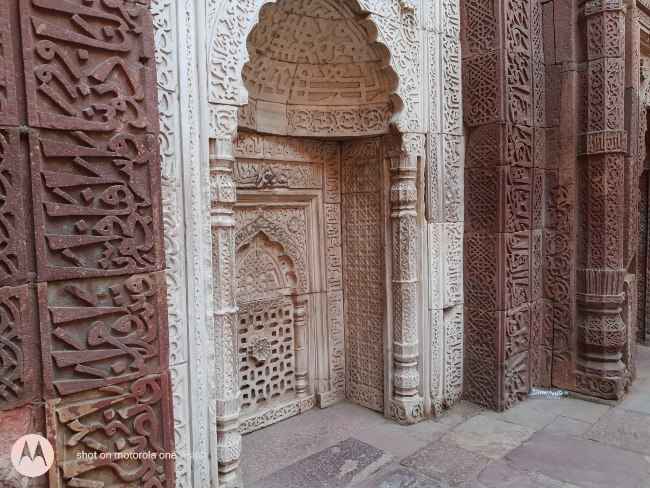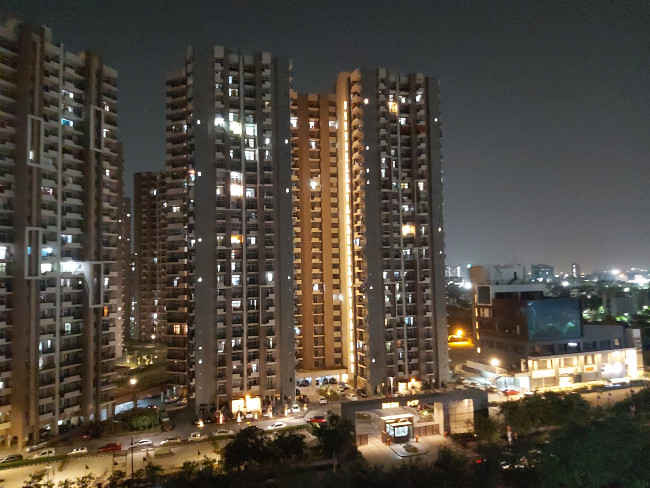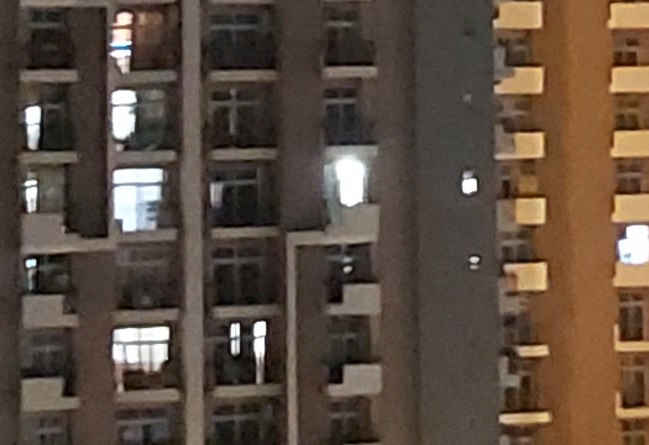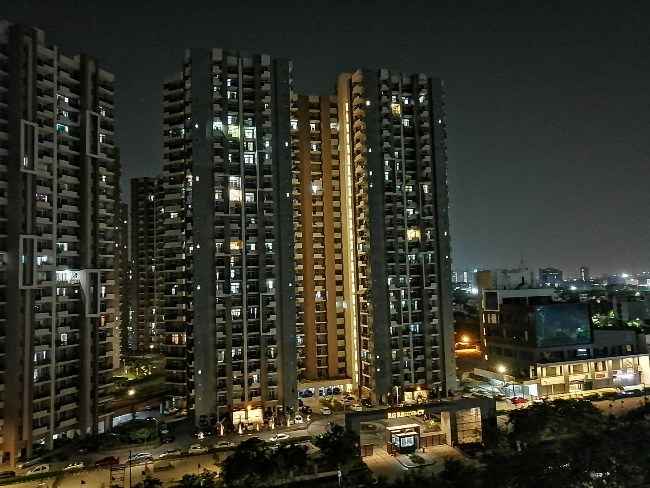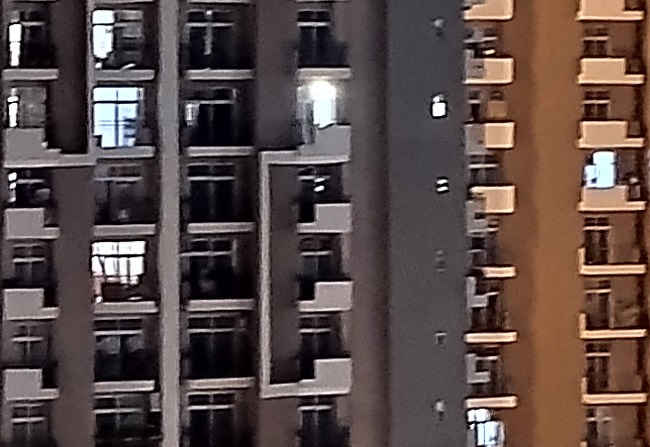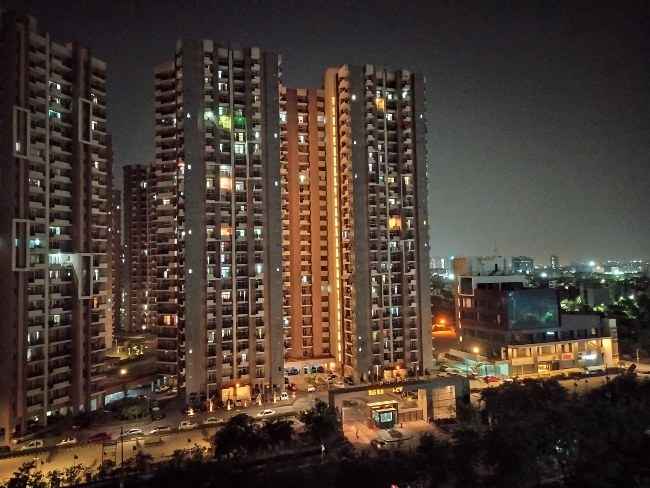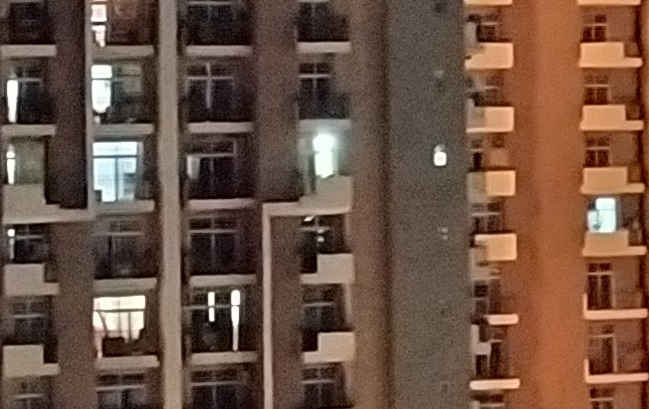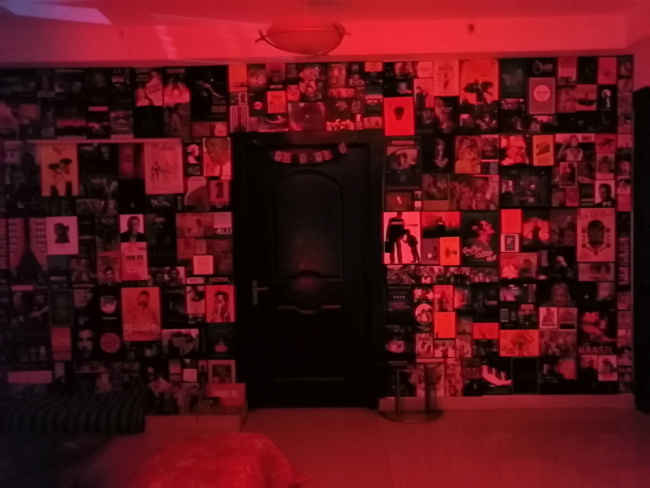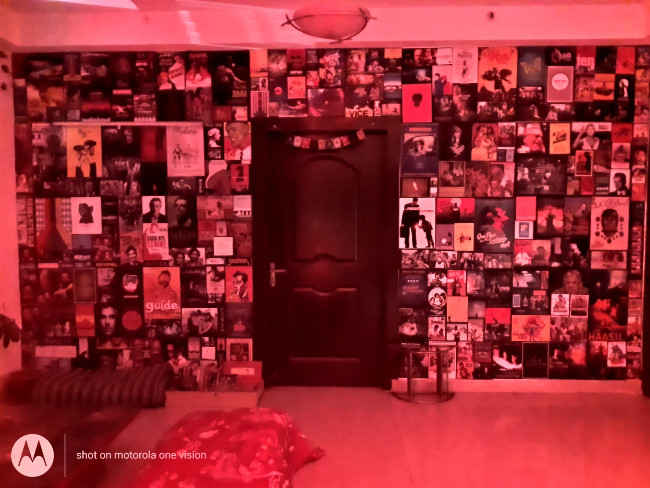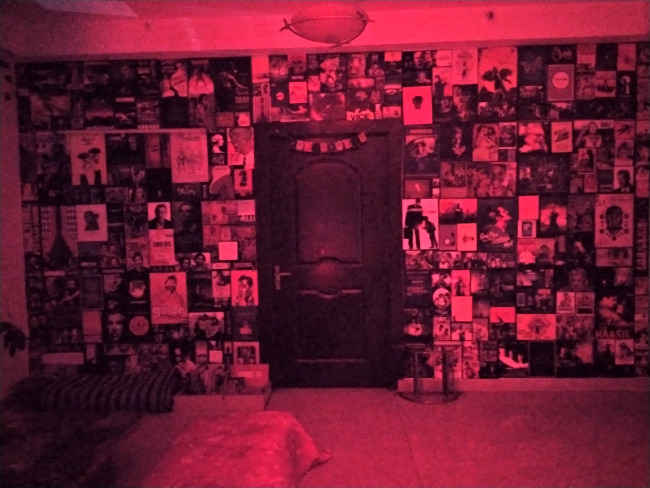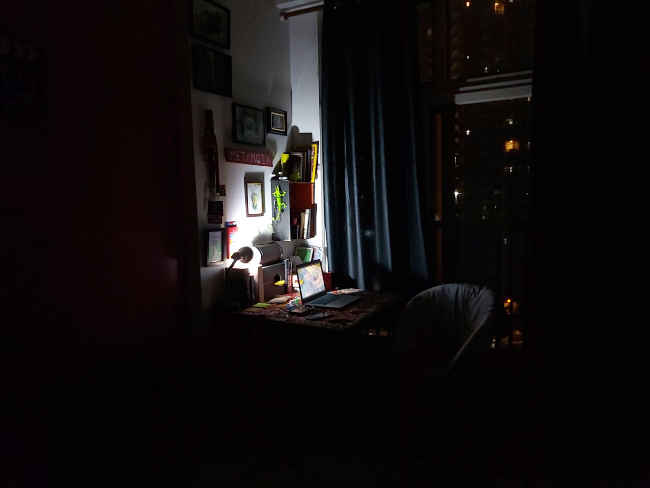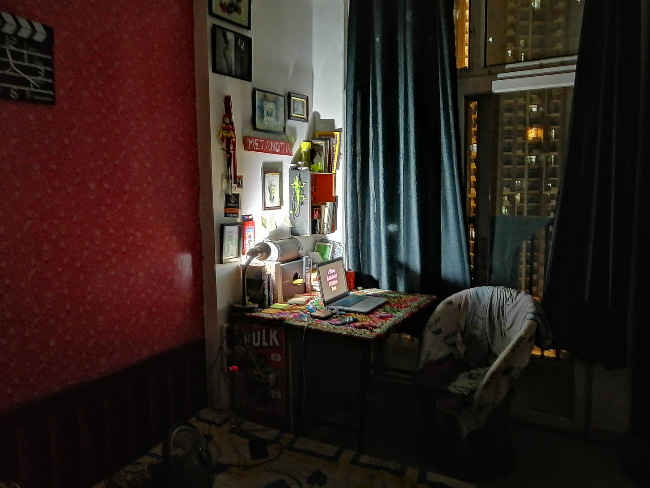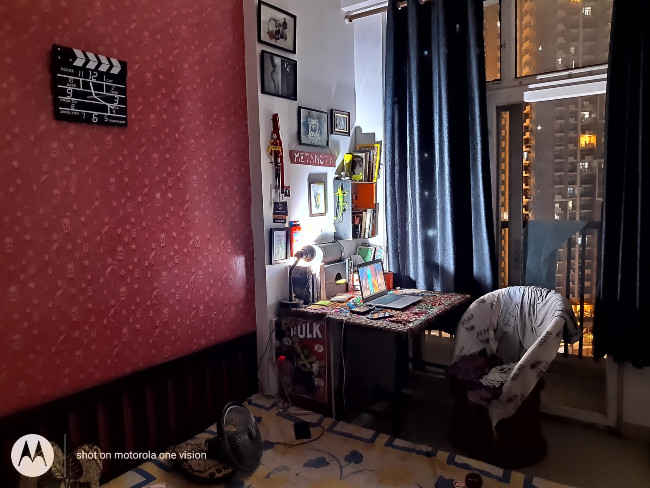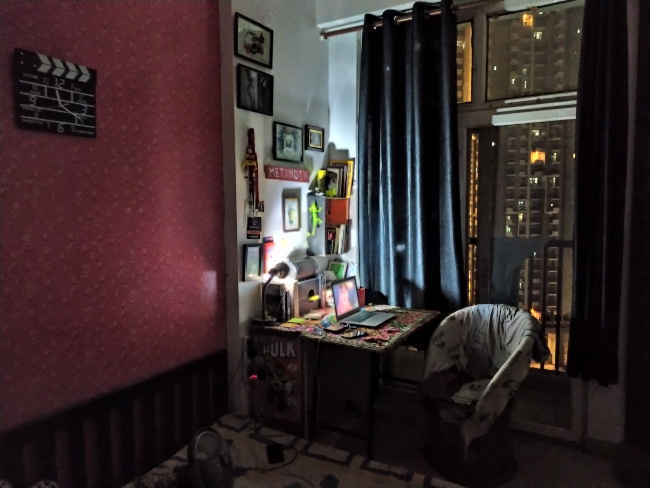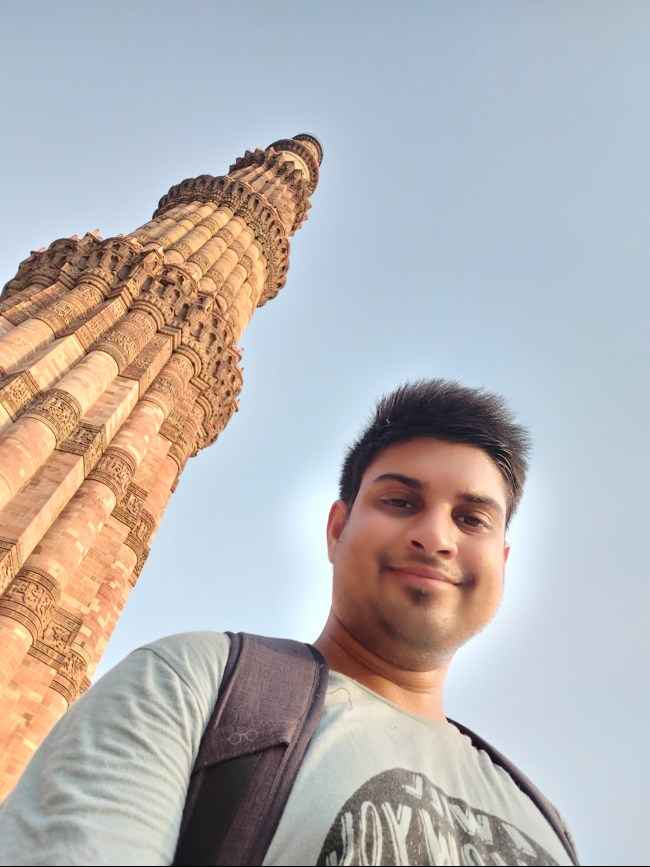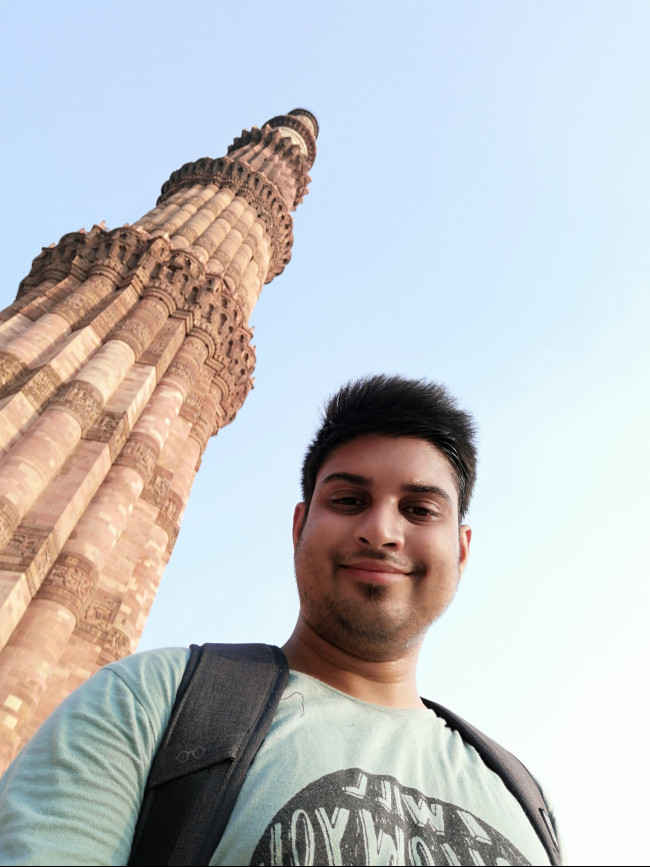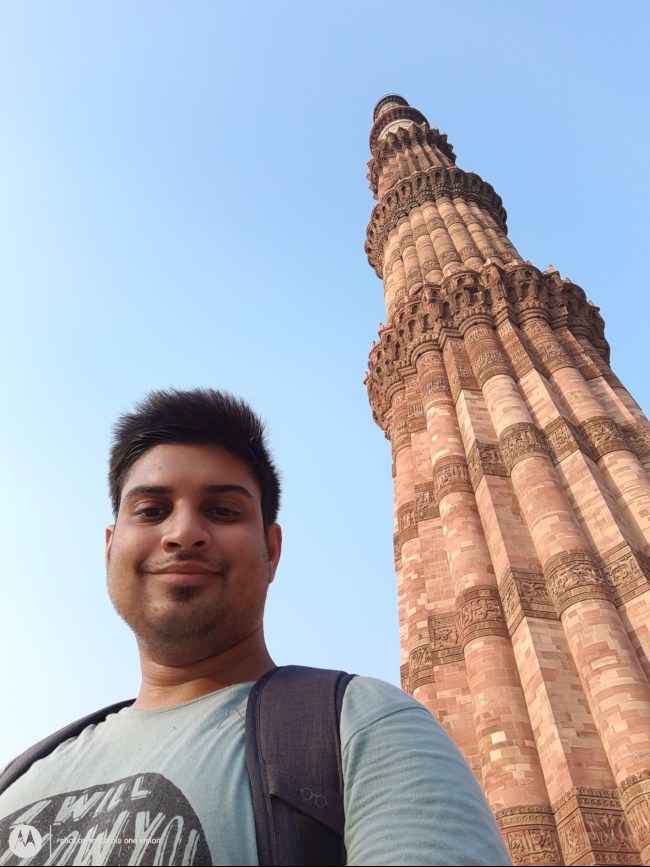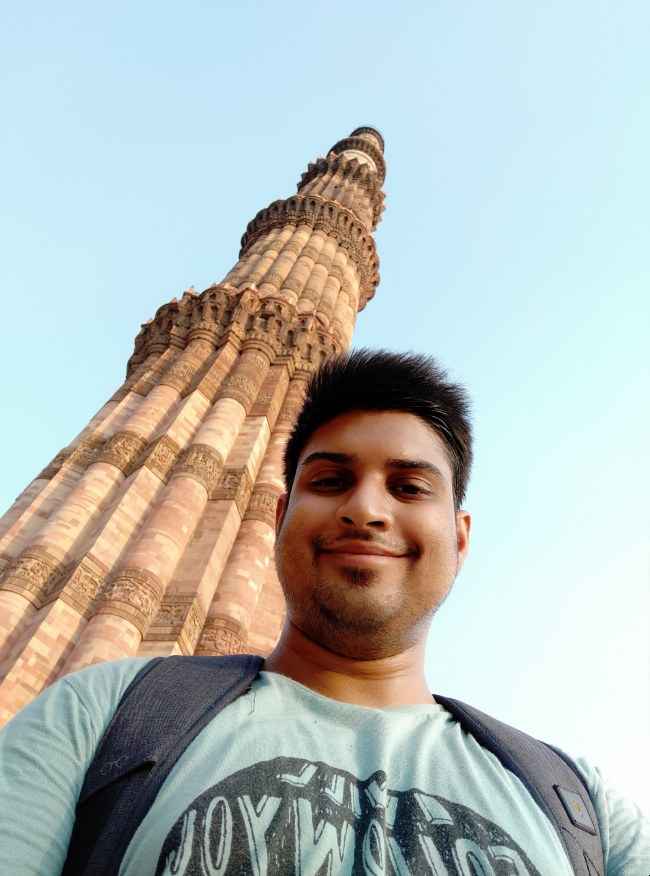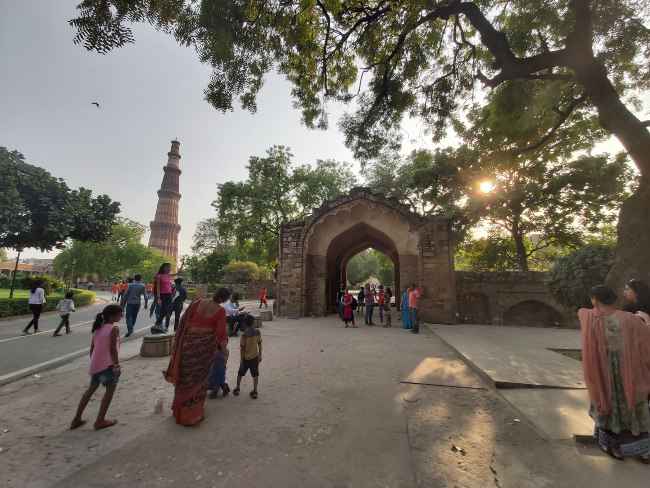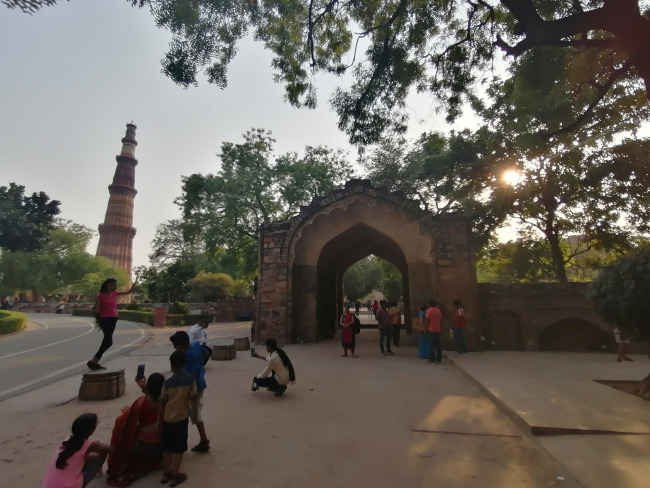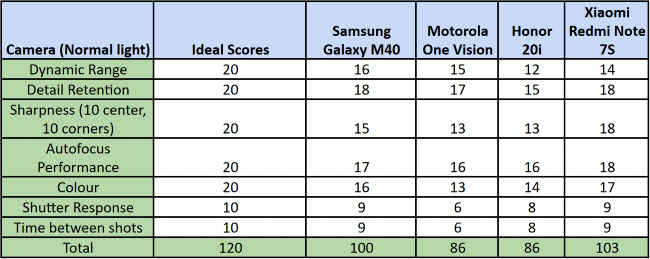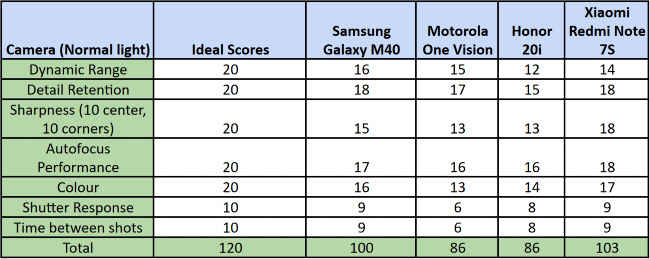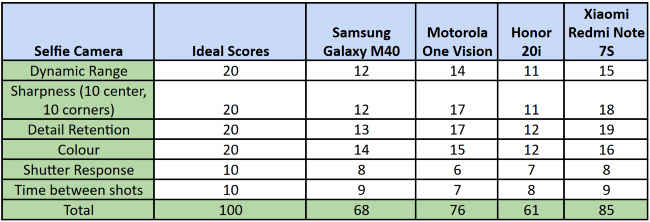Samsung Galaxy M40 vs Motorola One Vision Vs Honor 20i vs Xiaomi Redmi Note 7S: Camera shootout
There's been a bevy of new launches in the mid-range segment in the past one month or so, and we rounded up the best of the lot for an in-depth camera comparison.
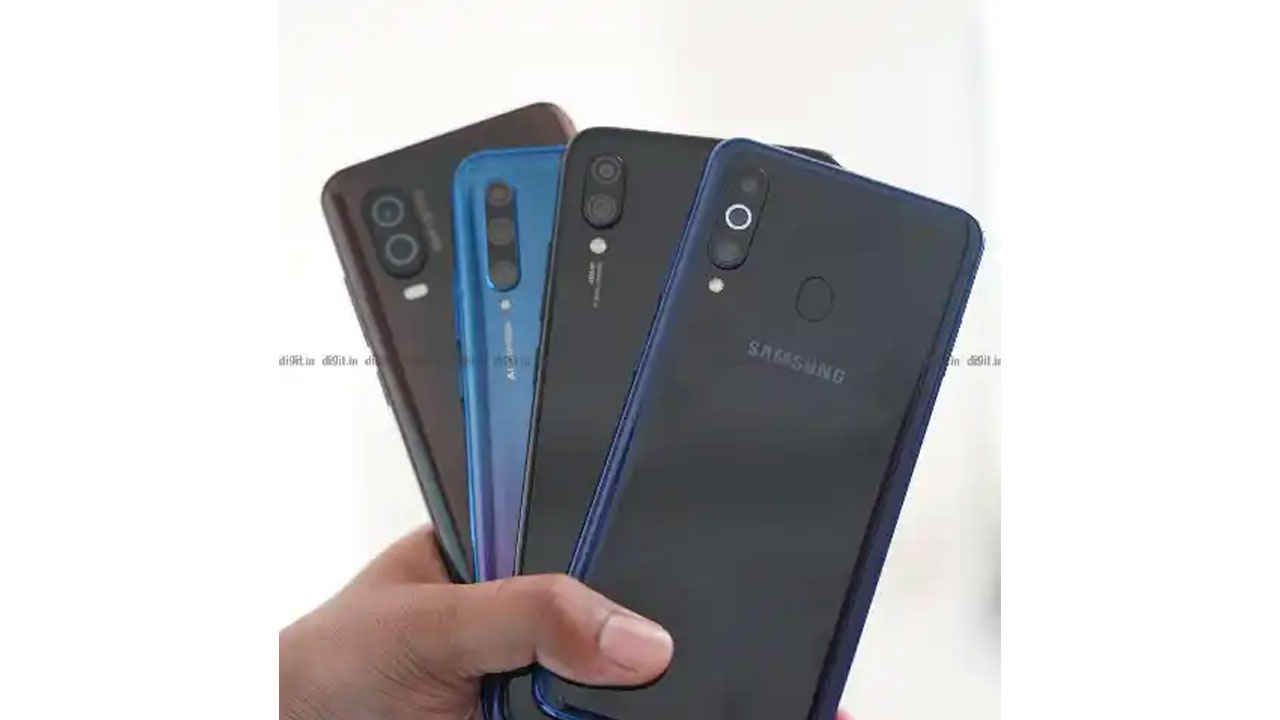
The recent surge in smartphone launches saw some interesting new entrants into the market. Both Xiaomi and Samsung are taking each other with a compelling option for every budget. Huawei, and as a result, Honor is going through rough seas, but that didn’t deter the launch of the new Honor 20 series, out of which the Honor 20i sits in the thick of the mid-range segment and has all the ingredients of an affordable mid-ranger. Meanwhile, Motorola made a comeback in the form of the Moto One Vision. Now, in each of these new launches, it’s the camera that’s in focus.
 Survey
SurveyThe Xiaomi Redmi Note 7S is the most affordable 48MP smartphone you can buy right now, while the Honor 20i brings a triple-camera setup under Rs 15,000. On the other hand, pay a little extra and you have the new Samsung Galaxy M40 to choose from along with the Motorola One Vision, both just under Rs 20,000. Just how good are the new breed of mid-range smartphone cameras? More importantly, can a Rs 15,000 smartphone match the camera quality of a Rs 20,000 smartphone? We’ll answer all these things, but first, let’s take a look at the camera hardware in these smartphones —
Samsung Galaxy M40 vs Xiaomi Redmi Note 7S vs Honor 20i vs Motorola One Vision
Based on the camera specs alone, it’s clear the megapixel wars are back in full swing. But thankfully, it comes with the footnote of a larger sensor size which is the real deal to consider. The Redmi Note 7s and the Motorola One Vision are ahead in that regard, with ½”-inch sized CMOS sensors with 48-megapixel resolution. This, we have previously seen to work in favour of capturing more details. The Samsung Galaxy M40 and the Honor 20i also offer high-res cameras, 32MP and 24MP respectively. Both of them also apply pixel binning by default to bring down the output resolution by a factor of four – 8MP and 6MP respectively. Both the Galaxy M40 and the One Vision also offer the widest aperture in this range, while the M40 and the Honor 20i goes a step further to include a wide-angle camera as well. Clearly, there’s no dearth of choices in smartphone cameras in the mid-range segment. All except the Galaxy M40 also offer a dedicated night mode that captures multiple photos and fuses them together to achieve a sharper, well-lit image, while 4K video recording is something that’s quickly becoming a standard even though 4K displays are far from being so. Finally, all these cameras come with Pro modes that let you fine-tune the camera settings before shooting.
Now that we know what each smartphone in this comparison has to offer, let’s see how they perform in the real world.
A word about the experience of shooting with these smartphones
Before we get to the actual shootout, it’s important to note how the phones perform while shooting the camera. Personally, I feel the Redmi Note 7S has the cleanest camera UI. It’s easy to get around and switch modes. The Honor 20i and the Motorola One Vision have the most cluttered camera apps. Things are haphazardly arranged, and it takes some time to get used to the scheme of things. The Honor 20i also lacks a few basic settings like RAW capture, and so does the Galaxy M40, especially a dedicated night mode and a fleshed-out pro-mode. As for the shutter response, the Motorola One Vision is the slowest of the lot. There’s a distinct half-second wait after you press the shutter. Often times, I missed the shot I was trying to take because of it. Having said that, the One Vision has one of the fastest night modes we have seen on a mid-ranger. It’s at par with the Note 7S’s night mode, if not faster. However, overall, all these phones offer a decent enough experience of shooting photos.
Daylight
Sharpness
Samsung Galaxy M40 (1/1000 sec. f/1.7 ISO64)
100 percent croppedv
Honor 20i (1/640 sec. f/1.8, ISO50)
100 percent cropped
Motorola One Vision (1/1250 sec. f/1.7, ISO50)
100 percent cropped
Xiaomi Redmi Note 7S (1/1250 sec. f/1.7, ISO50)
100 percent cropped
The high-res cameras in these mid-range phones are pretty good at capturing details in the daytime. All except the Moto One Vision managed to capture the number plate of the bike parked on the footpath. However, it’s the Redmi Note 7S that maintained uniform sharpness both at the center and in the corner. The trees in the right are in focus only in the Redmi Note 7S. The other three phones failed at offering minute details of the trees.
Galaxy M40 (1/50 sec. f/1.7, ISO64)
100 percent cropped
Honor 20i (1/100 sec. f/1.8, ISO250)
100 percent cropped
Motorola One Vision (1/100 sec. f/1.7, ISO59)
100 percent cropped
Xiaomi Redmi Note 7S (1/125 sec. f/1.8, ISO200)
100 percent cropped
Detail Retention
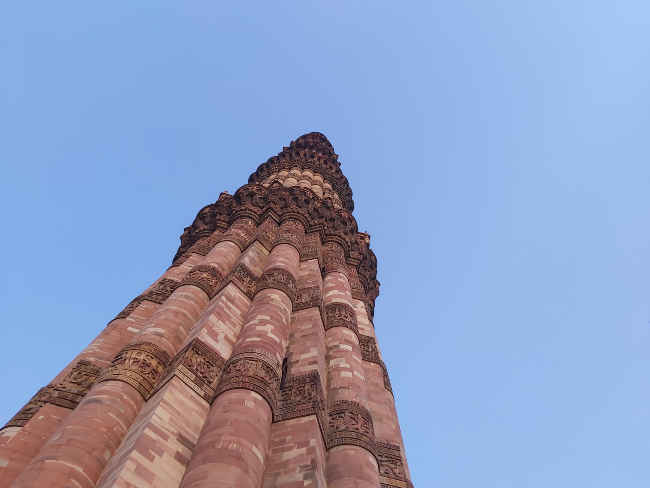

100 percent cropped
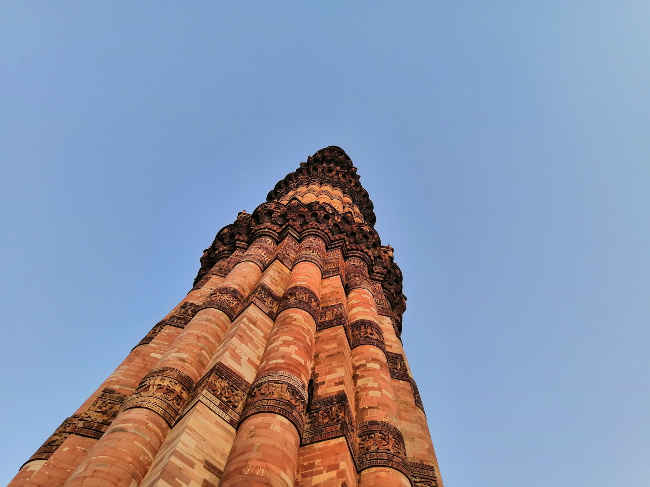
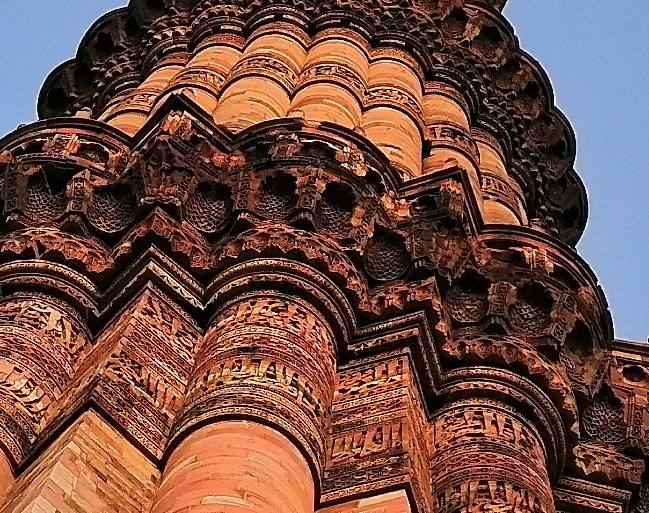
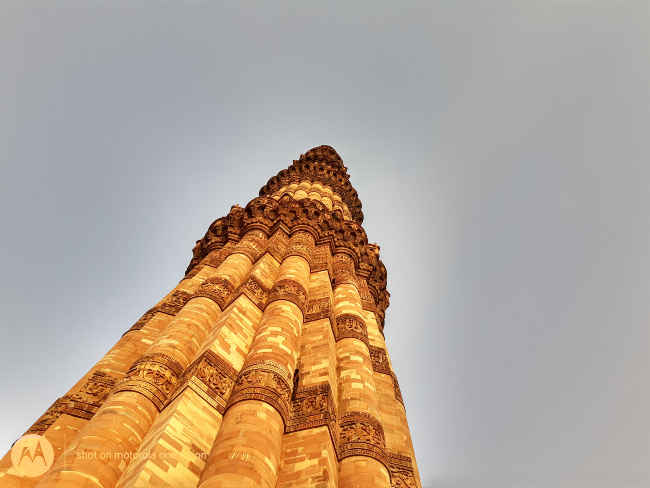
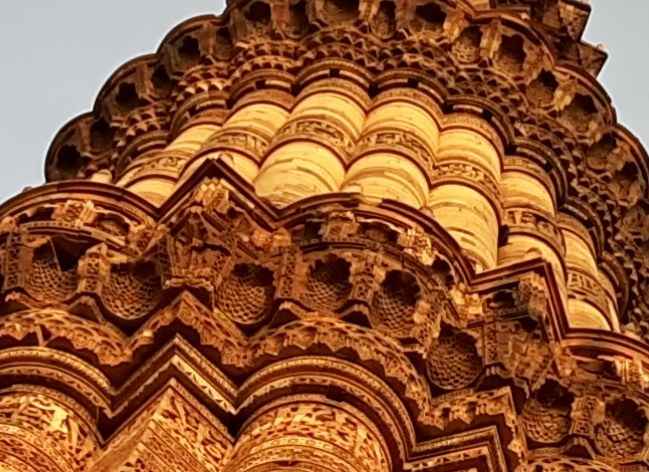
100 percent cropped
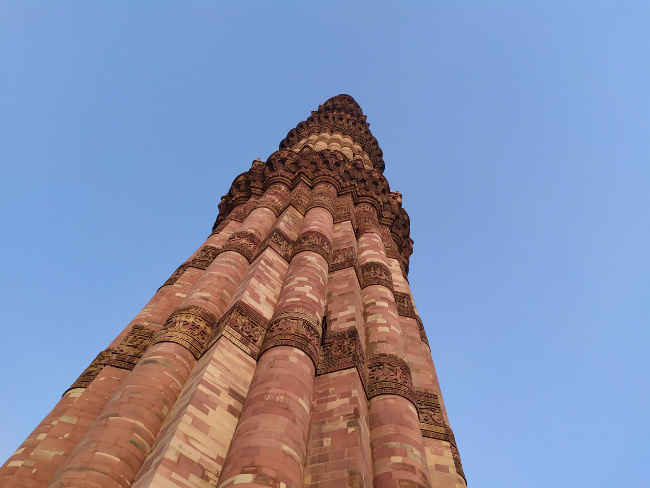
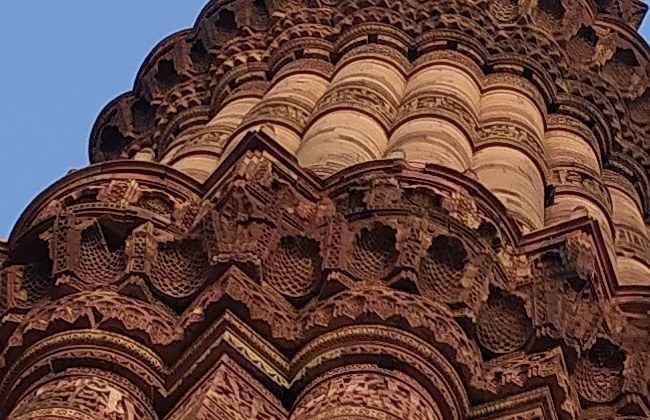
100 percent cropped
Dynamic Range
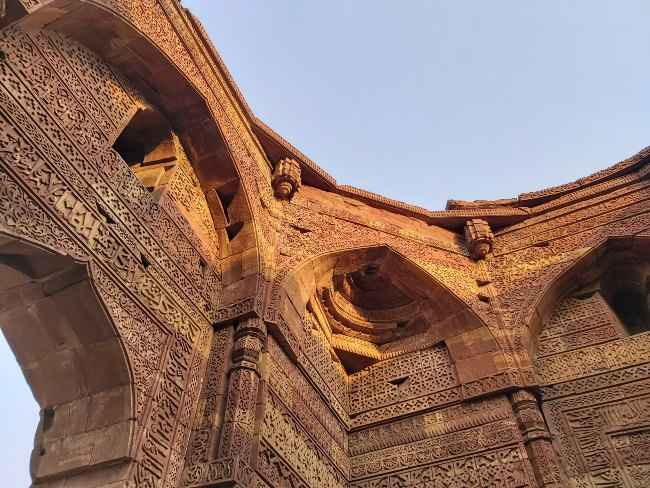
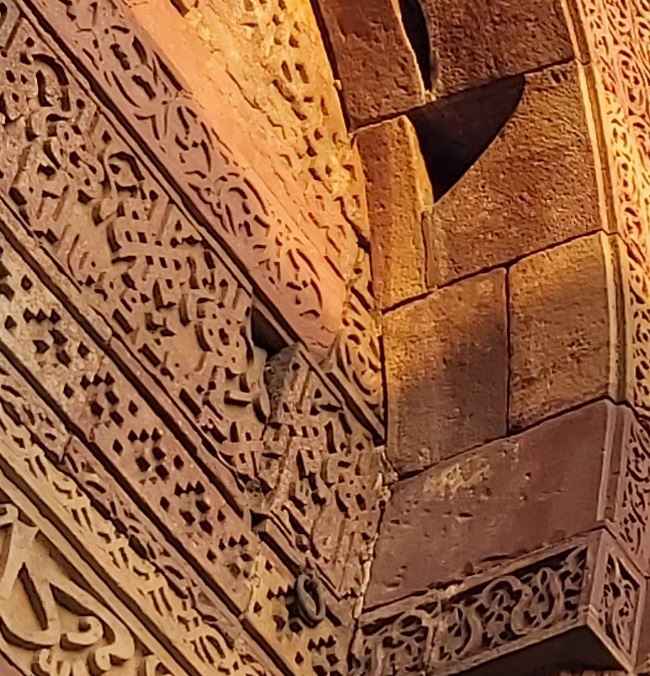
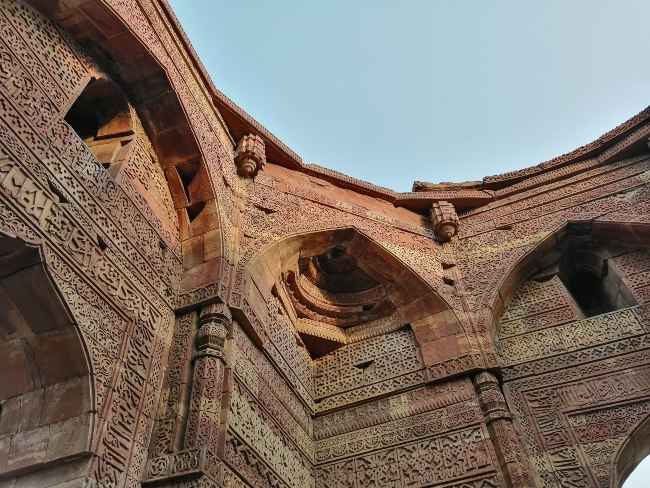
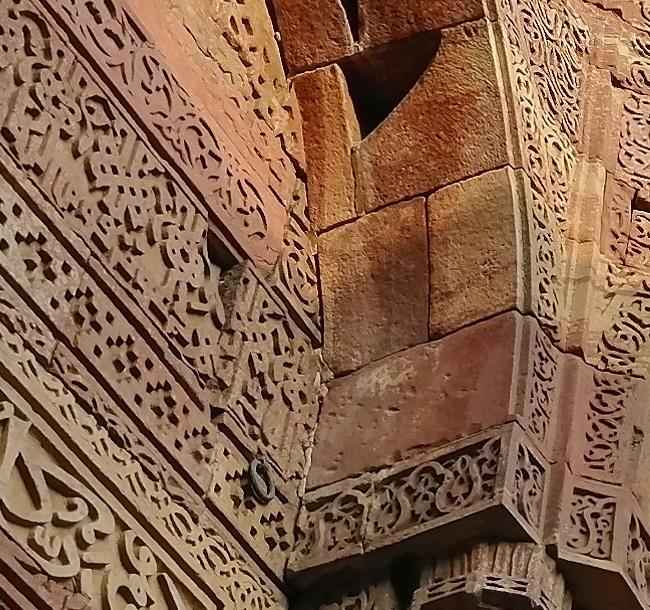
100 percent cropped

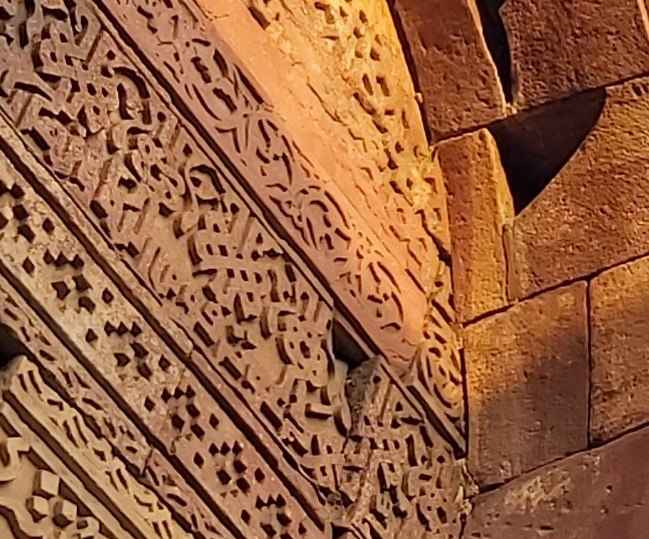
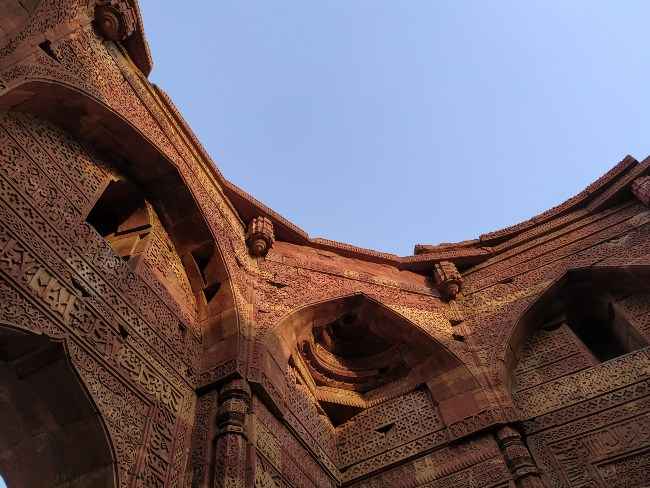
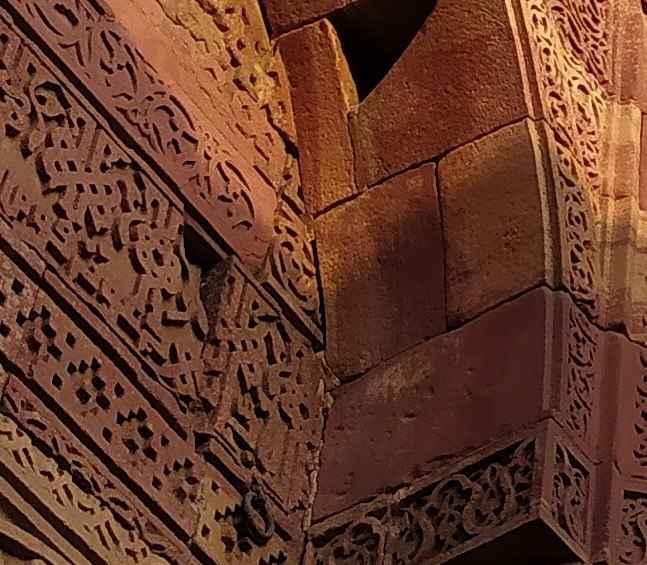
While most cameras these days capture photos in high sharpness, the dynamic range is something that’s still quite tricky to nail. Getting the details from the darker section of the photo requires blending of multiple images shot at various exposure and as such, the HDR algorithms in these phones does a commendable job.
Out of the four, the Samsung Galaxy M40 offers the most balanced image. The part lit by the setting sun is well countered by the details near the doorway at the corner and other darker regions. The Motorola One Vision’s image has a visibly warm tinge that spreads across the entire image. There’s also the same halation that we spoke about previously. It’s the phone’s HDR algorithm that’s a bit too aggressive it seems. The company should work on toning it down to make the image look more palatable. The Redmi Note 7S also keeps the colour temperature true to source, but the shadowed areas are much darker than the Galaxy M40’s. The Honor 20i’s image is just bland with little vibrance.
Lowlight
Since the Redmi Note 7S, Moto One Vision and the Honor 20i come with dedicated night modes and the Galaxy M40’s lowlight mode triggering automatically, we shot all the images with the night mode. As a result, there was a good 1-2 second delay in capturing and processing the image for most of the them. The Moto One Vision was actually the fastest out of the four. Word to note here is while the night mode shots do bring some level of improvement over the standard mode in low-light, shooting moving objects will result in a blurry shot.
Sharpness
Samsung Galaxy M40 (1/10 sec. f/1.7 ISO 2500)
100 percent cropped
Honor 20i (5 sec. f/1.8, ISO1000)
100 percent cropped
Motorola One Vision (1/10 sec. f/1.7, ISO426)
100 percent cropped
Xiaomi Redmi Note 7S (1/15 sec. f/1.8, ISO6400)
100 percent cropped
It’s worth praising how far low-light photography has come in mid-range phones. Thanks to multi-frame noise reduction where the camera captures several images and then apply noise reduction algorithms to extract more details, low-light photos are much more usable. Having said that, they’re still not as close to what you’d get from a high-end smartphone like the Google Pixel 3 or the Huawei P30 Pro, or for that matter, a DSLR.
Out of the four, the Motorola One Vision captures the sharpest low-light photos. It also manages to fill up the photo with more light without resulting in excessive noise. All the other three phones had some level of noise or blurred out details.
Detail Retention
Samsung Galaxy M40 (1/10 sec. f/1.7, ISO 2500)
Honor 20i (6 sec. f/1.8, ISO1000)
Motorola One Vision (1/10 sec. f/1.7, ISO1286)
Xiaomi Redmi Note 7S (1/15 sec. f/1.8, ISO9600)
The scene here did not have any light source save for a red bulb in the background. The Motorola One Vision managed to augment the light available to give a feeling there’s more details to see. However, zooming in reveals there’s much less details. Some of the names in the posters can be read, but all of them are grainy. The Galaxy M40’s image was the darkest of the lot with little to no detail decipherable in the posters while the Redmi Note 7S tries to match the One Vision’s quality but results in a noisy mess. The Honor 20i too does the same thing and the image is mostly incomprehensible.
Dynamic Range
Samsung Galaxy M40 (1/25 sec. f/1.7, ISO400)
Honor 20i (5 sec. f/1.8, ISO400)
Motorola One Vision (1/13 sec. f/1.7, ISO225)
Xiaomi Redmi Note 7S (1/15 sec. f/1.8, ISO2000)
Out of the four, the Galaxy M40’s image was the easiest to dismiss. Despite the low-light mode getting triggered, the camera captured only the area lit up by the desk lamp. There too, if you zoom in, there’s hardly any detail. Next, the Honor 20i and the Redmi Note 7S capture some of the details in the shadow area. Both managed to bring out the colour of the wall partly. But both phones have little to no detail in the lit-up area. The Motorola One Vision, on the other hand, does a commendable job. It not only brightens up the scene, but the resulting image is also sharper than the rest.
Front Camera
Samsung Galaxy M40 (1/320 sec. f/2, ISO40)
Honor 20i (1/200 sec. f/2, ISO50)
Motorola One Vision (1/640 sec. f/2, ISO40)
Xiaomi Redmi Note 7S (1/250 sec. f/2, ISO100)
The selfie camera on all the four smartphones are pretty good, which is mostly the case in mid-range smartphones these days. Out of the four, the Samsung Galaxy M40 and the Honor 20i removes all spots and blemishes and you are left with a face that looks heavily powdered and smoothened. It's not my cup of tea. The Motorola One Vision and the Xiaomi Redmi Note 7S capture every facial detail with good sharpness, on the other hand with not much of an effort to hide my dark circles and the likes. The Galaxy M40 also showed halation around the subject while the Honor 20i and the Note 7S had the background all washed out.
Wide-angle lens (Galaxy M40 vs Honor 20i)
Samsung Galaxy M40 (1/579 sec, f/2.2, ISO40)
Honor 20i (1/394, f/2.4, ISO50)
The Samsung Galaxy M40 and the Honor 20i stand out by offering an extra-wide-angle camera. This is, in fact, the first mid-range smartphone by Honor to include a wide-angle camera while Samsung has been fitting one in almost every smartphone it has launched this year. Based on the photos captures, Samsung clearly has the upper hand in shooting good wide-angle shots. The one by the Honor 20i seems low-res, has a lot of noise and lacks sharpness. Both phones also have a lot of distortion present in the images, the Honor 20i more than the Galaxy M40. Thankfully, Samsung adjusts the distortion by cropping the image a little. The Honor 20i does no such thing.
Conclusion
Based on the final scores, the Xiaomi Redmi Note 7S takes the best photos in daylight as well as the best selfies. The Note 7S with its 48MP Samsung sensor applies intelligent processing on top of it managing to extract good details with high sharpness. The photos are also quite true to source. The same cannot be said about the Motorola One Vision and the Honor 20i. The former bumps the colour temperature really high while the latter implements excessive post-processing. The Galaxy M40 is also quite reliable and lost out to the Note 7S by only 3 points.
In low-light, the results are completely different. It’s the Motorola One Vision that takes the best photos in low-light. The Night Vision mode in the phone is especially adept at making well-lit and sharp images which none of the other phones managed to offer. It’s the winner by a big margin.
As for selfies from the front camera, the Motorola One Vision and the Redmi Note 7S doesn’t smoothen the skin tone which the Galaxy M40 and the Honor 20i does by default. While there might be some who prefer their faces in selfies with no blemishes, I actually prefer otherwise which is why this scoring was quite subjective.
Now the bigger question — Do you need to spend around Rs 20,000 for a good camera smartphone? The answer is no. The Redmi Note 7 Pro proved so previously, and the Redmi Note 7S, it’s smaller sibling goes on to do the same amidst phones priced Rs 20,000. While there is a visible improvement in low-light imagery from the Rs 20,000-priced Moto One Vision, the rest of the features make for a bad low-light mode. But then again, low-light modes are mostly software based considering both phones have the same sensor, Xiaomi might address this weak point with a future update. There’s no denying that a smartphone priced higher will justify the price-tag to some extent with a superior display or reliable performance, but when it comes to cameras, costlier isn’t always better.
